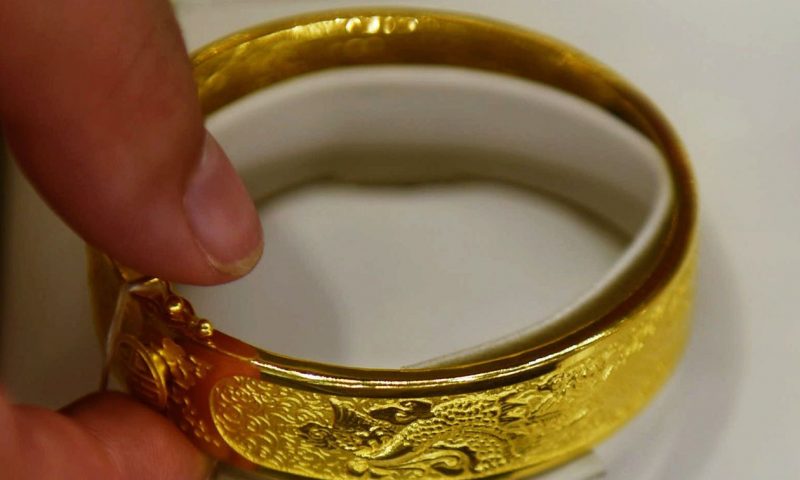Gold futures on Thursday settled lower for a third session in a row, with demand for bullion subsiding in the wake of modest strength in the dollar, as traders weighed a worrying rise in cases of COVID-19 throughout the globe.
“Our gut continues to favor the bear track as gold and silver have been unable to forge noted recovery action off the aggressive vaccine washout, even though U.S. infections are exploding,” which should be “fostering some form of renewed flight to quality interest,” analysts at Zaner Metals wrote in a daily note.
A stronger dollar against some of its major currency rivals on the session also was blamed for some of the weakness in bullion. The buck was up 0.1%, as measured by the ICE U.S. Dollar Index DXY, 0.00%, a gauge of the currency against a half-dozen rivals. However, the popular index was on track for a weekly decline of nearly 0.4%.
Pandemic-related “lockdowns will be the theme in the U.S. throughout the holiday season and that will drive a modest rally for the greenback,” said Edward Moya, senior market analyst at Oanda, in a market update.
A stronger greenback can influence trading in assets pegged to the monetary unit, making prices of assets like gold relatively more expensive to those using other currencies.
But some commodity experts say that gold’s inability to gather momentum substantially this week, even as the dollar has generally weakened, signals that the path higher for bullion may be eroding.
“In terms of gold prices, we see more selloff for the precious metal. This comes at a time when the dollar index is already quite weak. This shows that investors have started to move away from safe-haven assets, and they are more motivated to deploy their capital in riskier assets,” said Naeem Aslam, chief market analyst at AvaTrade in a research note.
On Thursday, December gold GCZ20, 0.13% lost $12.40, or 0.7%, to settle at $1,861.50 an ounce, following declines in each of the past two sessions. Prices, based on most-active contract, marked their lowest finish since Nov. 9, according to FactSet.
Silver futures for December delivery SIZ20, 0.44%, meanwhile, shed 40 cents, or 1.6%, to end at $24.048 an ounce, following a 0.8% decline in the previous session.
Precious metals added to losses after the Philadelphia Fed manufacturing index showed a fall of 6 points to 26.3 in November, and a weekly report on jobless claims showed the first increase in five weeks.
Initial jobless claims increased by a seasonally adjusted 31,000 to 742,000 in the seven days ended Nov. 14. Economists polled by MarketWatch had forecast initial jobless claims to total 710,000.
Another 320,237 people applied for benefits through a temporary federal-relief program that expires at the end of the year, the government said Thursday.
That data come as the global tally for confirmed cases of the coronavirus that causes COVID-19 climbed to 56.3 million on Thursday and deaths increased to 1.35 million, according to data provided by Johns Hopkins University. The surge in cases has prompted more states and cities to implement new restrictions, including New York City, which announced that it was reclosing its public school system.
Among other metals traded on Comex, December copper HGZ20, 0.45% added 0.1% to $3.202 a pound. January platinum PLF21, 0.65% nearly 0.1% to $951.50 an ounce, but December palladium PAZ20, 0.50% settled at $2,319.80 an ounce, down by almost 1.5%.

